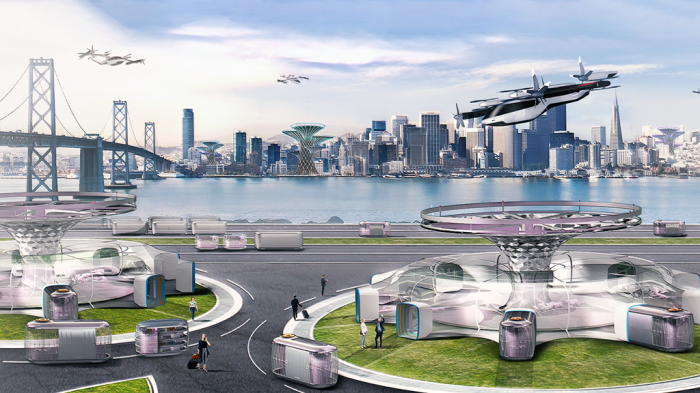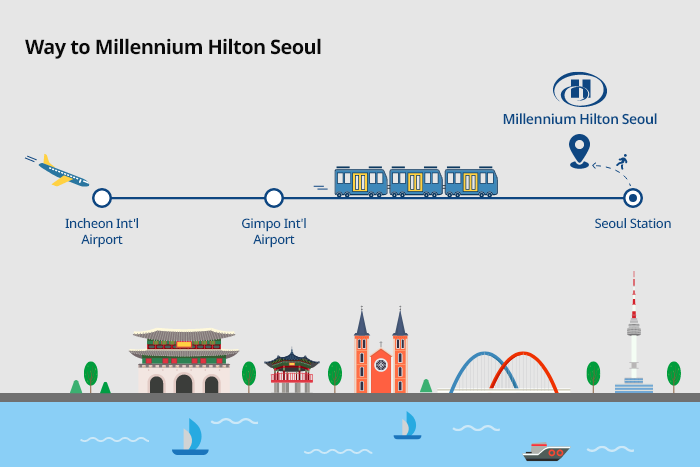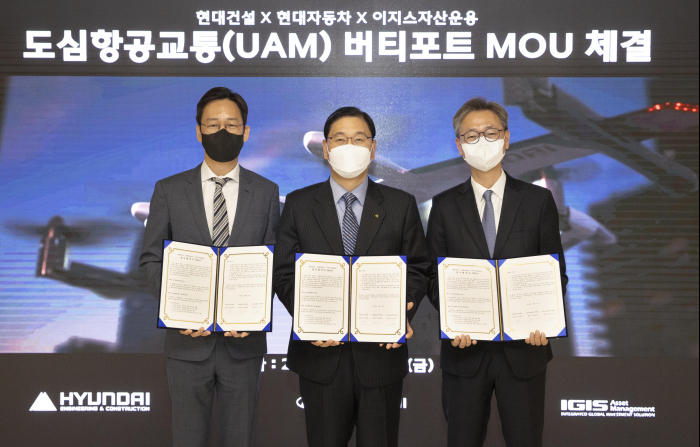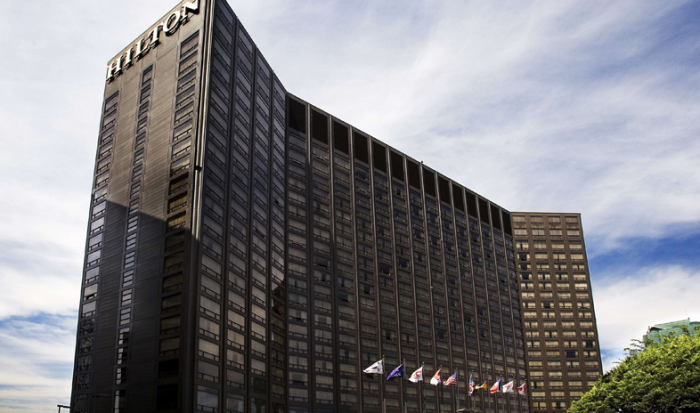Hilton Seoul to transform into UAM landing area
Hyundai E&C to build S.Korea's first urban air mobility landing area on the site of the Millennium Hilton Seoul
By Apr 18, 2022 (Gmt+09:00)
LG Chem to sell water filter business to Glenwood PE for $692 million


KT&G eyes overseas M&A after rejecting activist fund's offer


Kyobo Life poised to buy Japan’s SBI Group-owned savings bank


StockX in merger talks with Naver’s online reseller Kream


Meritz backs half of ex-manager’s $210 mn hedge fund



South Korea's Hyundai Engineering & Construction Co. (Hyundai E&C) plans to build the country's first landing area for urban air mobility (UAM) in the heart of Seoul, taking a step toward its commercialization.
The landing area, called a vertiport, is a designated area where future mobility aircraft can make vertical takeoffs and landing.
It will be located on the site of the Millennium Hilton Seoul. IGIS Asset Management Co. acquired the five-star hotel from Singapore-listed City Developments Limited (CDL) for 1.1 trillion won ($845 million) late last year.
The hotel is near Seoul Station, the terminal of all high-speed trains in South Korea. The station also serves as a major terminal for subways and commuter trains that link central Seoul to the country's two key airports: Incheon International Airport and Gimpo Airport.
For the construction, Hyundai E&C signed a memorandum of understanding (MOU) with Hyundai Motor Group and IGIS Asset on April 15.
The three companies will cooperate on the construction and operation of UAM vertiports not only for the Hilton hotel site, but also for other locations to be later selected.
Hyundai Motor is responsible for UAM aircraft development, its commercialization and test flights. Hyundai E&C will design and construct vertiports and mobility hubs that will connect UAM to ground transportation.
UAM is a next-generation mobility model that operates in the sky to transport passengers and cargo within urban and suburban areas. After landing on a vertiport, its passengers may transfer to an autonomous vehicle, according to Hyundai Motor.

KEY TRANSPORT HUB
Under the MOU, the Hilton hotel site will also be developed as a key transport hub, in tandem with Hyundai Motor's plan to bring UAM aircraft to the market by 2028.
IGIS Asset, South Korea's largest real estate investment firm, plans to redevelop Millennium Hilton Seoul into a mixed-use complex comprising a landmark hotel and office and retail spaces by 2027.
"We will cooperate in selecting locations for the vertiports, essential to the commercialization of UAM and in developing their business models," Hyundai E&C said in a statement.
"We hope to contribute to further developing the ecosystem of UAM, which will be commercialized in the near future."
Hyundai Motor is shifting its business focus toward UAM and other future mobility solutions, aiming for UAM to eventually make up 30% of its business.

Thanks to its location in the heart of the nation's capital, Millennium Hilton Seoul has become a regular meeting place for politicians and businesspeople for nearly 40 years.
Sitting at the foot of Mt. Namsan, it was also the venue of South Korea's 1997 negotiations to secure a $58 billion rescue package from the International Monetary Fund during the Asian financial crisis.

Since its opening in 1983, the hotel was co-managed by the now-defunct Daewoo Group and Hilton International, a US hotel chain, until Daewoo sold the property to CDL for $213.5 million in 1999.
Its redevelopment is expected to improve the value and utilization of the 22-floor hotel built on land measuring 18,760 square meters. But the planned destruction of the building faces some opposition given its historical significance and architectural value.
Write to Eun-Ji Shim at summit@hankyung.com
Yeonhee Kim edited this article.
-
 Alternative investmentsHilton Seoul to be redeveloped as mixed-use complex
Alternative investmentsHilton Seoul to be redeveloped as mixed-use complexOct 19, 2021 (Gmt+09:00)
2 Min read -
 Urban air mobilityKorean Air joins race for flying car business to rival Hyundai, Hanwha
Urban air mobilityKorean Air joins race for flying car business to rival Hyundai, HanwhaMay 06, 2021 (Gmt+09:00)
4 Min read -
 Future mobilityHyundai Motor hires US aerospace expert as UAM business CTO
Future mobilityHyundai Motor hires US aerospace expert as UAM business CTOFeb 24, 2021 (Gmt+09:00)
2 Min read


